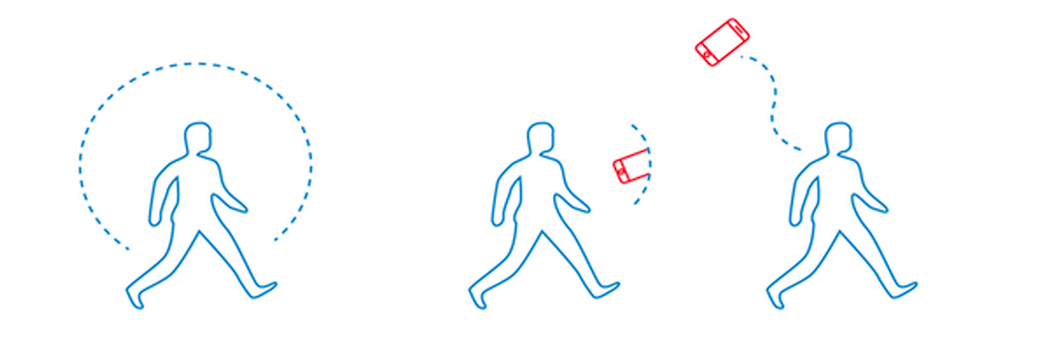
Last summer, I started talking with an American professor while waiting for a non-existent ferry in Istanbul. I soon found out that he happened to be one of the few early developers of the original iPhone and had only recently left the company. We joked about Nokia, and later during a dinner I asked him politely how Apple managed to be so innovative. His answer? “Apple has never been innovative. You could ask anyone in the early 2000s and they would have told you that one day all of us would have a computer in our pockets. Steve Jobs just decided that it should be Apple that made it happen.”
We now know that one day we won’t need our smartphones either.
When our interaction devices get smaller and smaller, it becomes increasingly easier to create smart watches, jewelry or clothing that actually works and looks nice. There is currently a lot of buzz regarding this kind of wearable technology, or so-called “wearables” (e.g. Wikipedia, stories at Engadget).
However, the wearables are just a minuscule part of a huge Sensor Revolution, which has many names. It’s often called the Internet of Things (en / fin), the Internet of Everything or the Programmable World. The change is made possible by the Third Industrial Revolution (check the book by Jeremy Rifkin): according to Rifkin an industrial revolution happens every time both information technology (telegraph, phone, internet) and energy technology (coal, oil, renewables) are disrupted.
“Major advances in civilizations are processes that all but wreck the societies in which they occur.” – A.N Whitehead
When most objects and services have a name and a means to communicate with them, we will not need smart phones or wearables anymore. The information and communication technology becomes an integral part of our surroundings. It becomes Nearable Technology.
It probably goes without saying that this is not a commonly used term just yet. While typing this, my autocorrect changes, quite fittingly, the word “nearable” to the word “bearable”. This is pretty much the point: calm technology is embedded in our lives so that it improves our wellbeing and capabilities without stressing us or constantly demanding our attention (Although using the Internet does not stress us – using Facebook does).
After the widespread introduction of Nearables our world will become a different place. This is not to say it will automatically be a paradise. Severe unsolved questions will remain regarding privacy, equal capabilities and access. These fears are not new (see this great speech from 1994). Nevertheless, if we can get a glimpse of the world of Nearables, we might be able to understand what kind of policies, laws, businesses and business ecosystems, and user practices we should encourage. Demos Helsinki will work with these themes in our new strategic research initiative, Naked Approach, together with the leading technology universities and research institutions in Finland.
Ubiquitous computing, Internet of Things, Programmable World and other similar topics have been discussed for ages. For example between 2001 and 2003, the EU funded 17 large projects focused on the same topics. The Programmable World has not flourished before because, although the information technology had evolved to a satisfactory level already in the 2000s, the energy technologies were still lagging behind. Wired wrote in 2013: “The main existential threat to the Programmable World is the… mundane issue of power. Every sensor still needs a power source, which in most cases right now means a battery; low-energy protocols allow those batteries to last a long time, even a few years, but eventually they’ll need to be replaced.”
Here’s the thing: Many sensors that are innovated in the Naked Approach will harvest their own energy. So how do you like them apples?
Hat tip to Sami Niemelä for some of the inspiring links mentioned in this blog post.